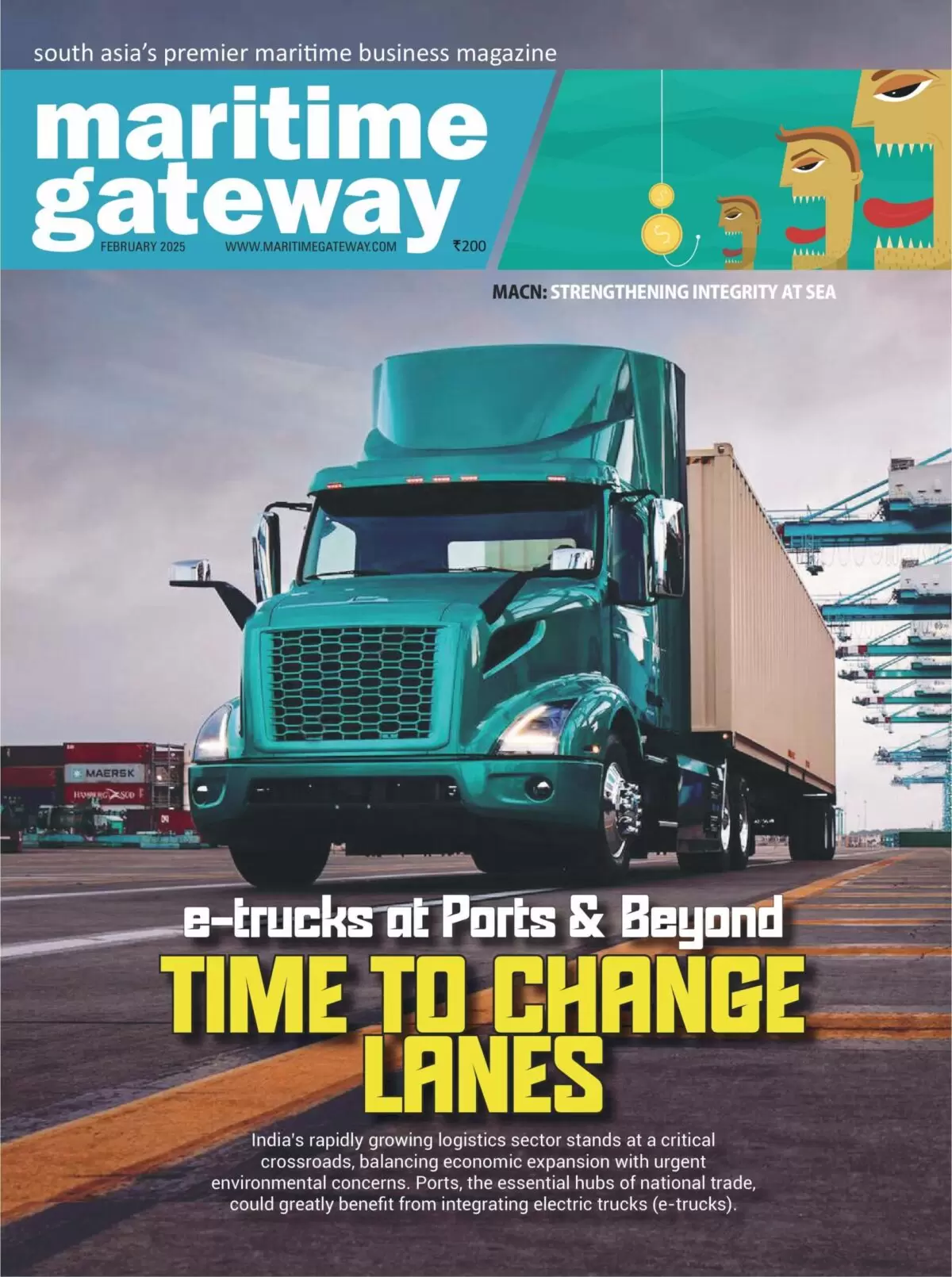Starting with a humble beginning in India, Chartering RoRo Freight Systems has expanded across the globe, growing multi-fold. The company is currently focusing on the US market, offering door-to-door solutions, shares Capt. Parmeet Singh Bawa, Executive Director.
Tell us about the genesis of Chartering RoRo Freight Systems and how the company has grown over the years?
Chartering RoRo freight Systems was established with the objective to remain close to the customer, while serving the shipper consignee, leveraging the relationships and domain expertise in the process. Following the establishment of operations in India we expanded to the US market and through a network of partners in China, Middle East, Africa and Europe. The company has been growing in multiples annually over the last five years, rising from an MSME to become an SME.
Let’s talk about the current scenario – the Red Sea crisis. What are the challenges freight forwarders are facing in the current scenario? What has been the impact on the containerised trade, as ships are travelling longer routes around the Cape of Good Hope?
Red Sea disruption pivoted the sliding freight rates which had corrected by 90% over the 2022-23 level. If freight rates maintained at that low level the survival of liners would have become difficult. Looking back at the 2018-2020 period, there was a meltdown of a few carriers under the massive financial pressures including major restructuring across biggest players in the trade – Maersk, Hapag Lloyd, Hamburg Sud, UASC, NYK, MOL, Kline, HMM and Hanjin. Soon there were new survival strategies of mergers and acquisitions across the Container spectrum. Then came the unprecedented demand of consumers during the Pandemic and the freight levels spiked to an unjustifiable level – obviously instrumented by leading players – modifying supply demand scenario.
The brunt of it all was passed on to the shipper and Consignee. Liners announced profits and double bonuses while the shippers bled. At the end of the day there were interventions and the freight levels corrected to 80% lower.
In 2023, reduced demand and increased supply had put liners in a jeopardy since they had committed for ocean freight and charter rates. Until December 2023, the ocean freight levels were reasonably steady and were expected to correct, but the Red Sea crisis increased the rates with ships imposing as much as $500 per container increase in charges, going around the Cape of Good Hope. The freight rates had increased almost 2X going to the US East Coast in 2024 January. However the shipping lines have not stopped but added another peak season surcharge making it 3X, eventually the freight levels touched $5000 for 40” high cube going to US East Coast. This is almost 3 1/2 times of what a shipper had normally paid same time last year. Earlier, Indian exports to the US market had cost less compared to Chinese exports, but in the current scenario, the freight rates from China to US declined from $6000 to $3500 over past two months, while freight rates from India reduced from $5000 to $4200. As a result, Indian exports are now more expensive on a teu basis to the United States, compared to China.
The Freight broker business is also impacted. This business is not done on a percentage commission, but it is only on a fixed fee which is right now negligible. The sustainability and survival of a lot of small/medium sized freight brokers will be under question within the next 6 months to 1 year. Unless situation improves, alternate routes and cheaper costs is something that we need to work on without which sustainability is questionable.
How will these ongoing wars and restrictions to shipping routes alter the supply chains in the future?
Wars and crisis situations actually bring about an opportunity for logistics but in a very niche segment, which means the demand is definitely restricted. However, the supply on a unique segment with very few players is available. Therefore the cost of service goes up margins are not very clear and the customer lands up paying much more for the same cost and service. So the services into the ongoing Russia Ukraine sector has only made an incremental impact on the cost of doing business for Shipper and consignee. They are the ones who are paying the differential increment while the Freight Brokers take coverage with the shipping lines to pass the cost and possible marginal increase in their margins to the shippers. So as a trade it becomes responsibility of the service providers to offer sustainable long-term solutions, which ensures growth for the Shipping business and also support to the customers in the crisis situation.
What are your expectations with respect to the freight rates for the coming quarters?
Traditionally, the freight levels are high through the first quarter of the year January through March, as this is the financial closing for most businesses, pushing volumes outwards to achieve target set for the year. Usually from end of March towards end of May, the businesses do have achieved the targets and all the rollovers are clear. The demand reduces greatly. The aggro season is not on. Eventually the business is sustaining for the shipping lines on 25% to 30% of their volumes which is industrial Cargo. Therefore the contract season for end of March is usually set on the coming year to lock prices down for the long-term.
However the Freight levels do see a correction at 5% to 10%, post the contract signing season which is what is expected in 2024 as well. The deviation through Red Sea Crisis, the wars of Ukraine, Russia, the financial imbalance in China are all leading to a focus on India as a service provider to the US and Europe. The cost of energy in Europe is also higher, raising cost of production. Hence India still remains as a preferred consumption manufacturing location for Europe also. We see there is stability in the rate levels, perhaps 10% lower than current in the first six months of 2024, there after the crop season will bring the seasonal increment back in place for the shipping line. It is quite unpredictable but we hope there is some sense in this chaos.
Could you elaborate on your presence in the US and European markets?
In 2021, Chartering Ro-Ro identified an opportunity to offer door-to-door solutions in United States. Through the year of 2021 -22 we established relationship with most trucking companies and warehouse providers in United States. Especially in the East Coast, we signed up with trucking companies to ensure that the customers from India are able to export, providing them door-to-door solutions. Post COVID opportunities increased for 3PL solutions as well, especially for those available on both ends with an integrated solution. Our businesses just post Covid was 60% based on exports and 40% on the imports revenue. However, 2023 saw a shift in the balance of our revenue making it 50-50 and eventually by end of 2023 we realised that our revenue is 75% on the import side and only 25% of the export side. This is obviously due to the corrected ocean freight levels and the margins that they generate for us. However the US outbound has been reasonably stable and sustainable. We foresee a growing support from the customers in the United States.
Recently, there has been a lot of shake up among the shipping alliances. How will these changes impact the trade movement? The service strategies of the shipping lines and the alliance restructuring is an ongoing process of cost optimisation, shipping lines no longer compete on price alone, they also know that the cost of operations has a direct impact on their revenues, so identifying reliable partners with compatible service levels is being sought after. The increase in ship size from 8000 standard to now 13 to 16,000 teus is only an indicator of cost optimisation. Therefore the likes of smaller players will come together and form alliance in shorter coastal sectors while continuing to buy smaller space from the main players on the long haul sectors.






